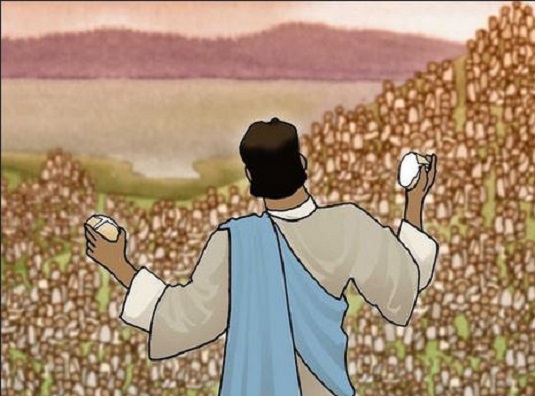
John 1:1-18
In the beginning was the Word,
and the Word was with God,
and the Word was God.
He was in the beginning with God.
All things came to be through him,
and without him nothing came to be.
What came to be through him was life,
and this life was the light of the human race;
the light shines in the darkness,
and the darkness has not overcome it.
A man named John was sent from God.
He came for testimony, to testify to the light,
so that all might believe through him.
He was not the light,
but came to testify to the light.
The true light, which enlightens everyone, was coming into the world.
He was in the world,
and the world came to be through him,
but the world did not know him.
He came to what was his own,
but his own people did not accept him.
But to those who did accept him
he gave power to become children of God,
to those who believe in his name,
who were born not by natural generation
nor by human choice nor by a man’s decision
but of God.
And the Word became flesh
and made his dwelling among us,
and we saw his glory,
the glory as of the Father’s only Son,
full of grace and truth.
John testified to him and cried out, saying,
“This was he of whom I said,
‘The one who is coming after me ranks ahead of me
because he existed before me.’”
From his fullness we have all received,
grace in place of grace,
because while the law was given through Moses,
grace and truth came through Jesus Christ.
No one has ever seen God.
The only Son, God, who is at the Father’s side,
has revealed him.

The Parable of the Farmer and the Geese
There once was a farmer who, though a decent man, was an unbeliever because he could not understand why God would become man, only to be crucified to death, abandoned by his friends.
The farmer loved all animals, but especially loved birds.
One morning, news came of the imminent arrival of a terrible snow storm. Anxious to protect his flock of geese from the coming blizzard, the farmer put his heavy coat on and went out to get the geese into the shelter and safety of the barn.
He first tried coaxing the geese, gently shooing them into the barn. But the geese, being geese, refused to be coaxed.
He then tried luring the geese into the barn. He got a bag of grain and left a trail of seed from the outside into the barn. The geese ate the seed but stubbornly refused to enter the barn.
Meanwhile, the wind began to howl, and heavy snow began to fall . . . .
Now desperate, the farmer thought he would try scaring the geese. So he took a hammer and banged on a metal pan, so that the loud noise would frighten the geese into the barn. But the geese again refused to budge.
So the farmer gave up and retreated into his house.
In the warmth of his living room, he stood helplessly at the window, watching the blizzard descend on the geese. He knew they would surely die in the freezing storm.
In despair, a thought came to the farmer: “If only I could become a goose, then maybe the geese might listen to me and follow me into the barn.”
At that, the farmer finally understood.
Falling on his knees, sobbing and choking with tears, he said: “Forgive me, Lord. I know now why You became man.”
Today we celebrate the birth of our Savior, the Light of the world.
Rejoice!
May the joy of CHRISTmas be with you this glorious morning,
~E


